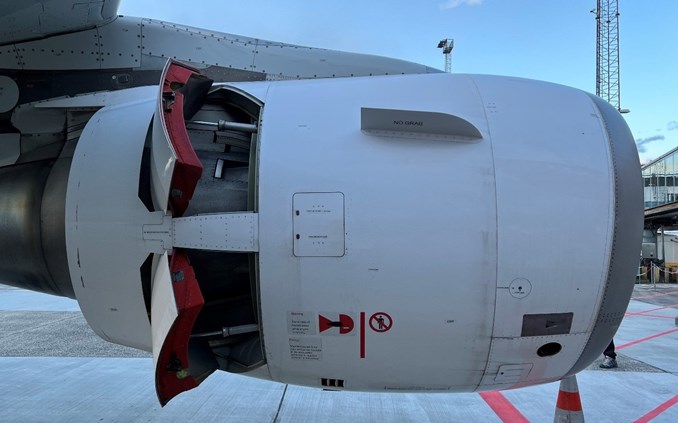The Danish Accident Investigation Board released yesterday a preliminary report regarding the serious incident sustained by TAP Air Portugal Airbus A320 while trying to land at Copenhagen Airport, Denmark on 8th April.
The Incident
The 12.4 years old aircraft with registration CS-TNV and performing flight TP-754 from Lisbon (Portugal) to Copenhagen (Denmark) with 102 passengers and 7 crew, was landing on Copenhagen’s Runway 30 when the flight crew decided to abort the landing initiating a go-around.

According to the press release, upon applying Take-off/Go-around thrust (TOGA), the aircraft at low altitude started veering to the left – the speed over ground reduced sharply from about 133 to about 120 knots – and did neither climb nor accelerate as expected by the flight crew, which temporarily made it difficult for the flight crew to maintain control of the A320.
The flight crew noticed an indication for engine no. 1 thrust reverser door(s) to be unlocked. Engine nº 1 was at idle thrust. The pilots regained control of the aircraft and established a single engine climb toward a safe altitude. During the climb, the flight crew declared an emergency (“Mayday”) and performed relevant checklists. Air Traffic Control issued radar vectors for a priority landing on runway 22L.
Without further incidents, the aircraft landed safely about 20 minutes after the go-around.
Preliminary Report
The safety agency states that an external inspection of runway 30, the grass areas surrounding runway 30, and the aircraft was performed and revealed:
- No imprints of aircraft ground contact.
- No external damages to the aircraft (including aircraft fuselage, wings, tail and engine nacelles).
- Three out of four thrust reverser doors on engine no. 1 were in the fully deployed position.
CS-TNV flew to Lisbon from Copenhagen on 18th April and is still on the ground.

The investigation into this serious TAP incident will continue, with experts looking at various sources of information to determine why the aircraft suffered in-flight thrust reverser deployment. For this, they will examine flight recorders, the engine itself, the weather, simulations and carry out interviews with crew and others.
Background
Thrust reversers are only deployed when the aircraft is on the ground to help slow down the speed after landing reducing wear on the brakes and enabling shorter landing distances.
Inadvertent thrust reversers deployment can be deadly, on May 26 1991 a Lauda Air Flight 004 from Bangkok, Thailand to Vienna, Austria entered an uncontrolled dive and sustained mid-air broke up after the thrust reverser on the Boeing 767-300ER engine nº1 deployed in flight. All 213 passengers and 10 crew died.



